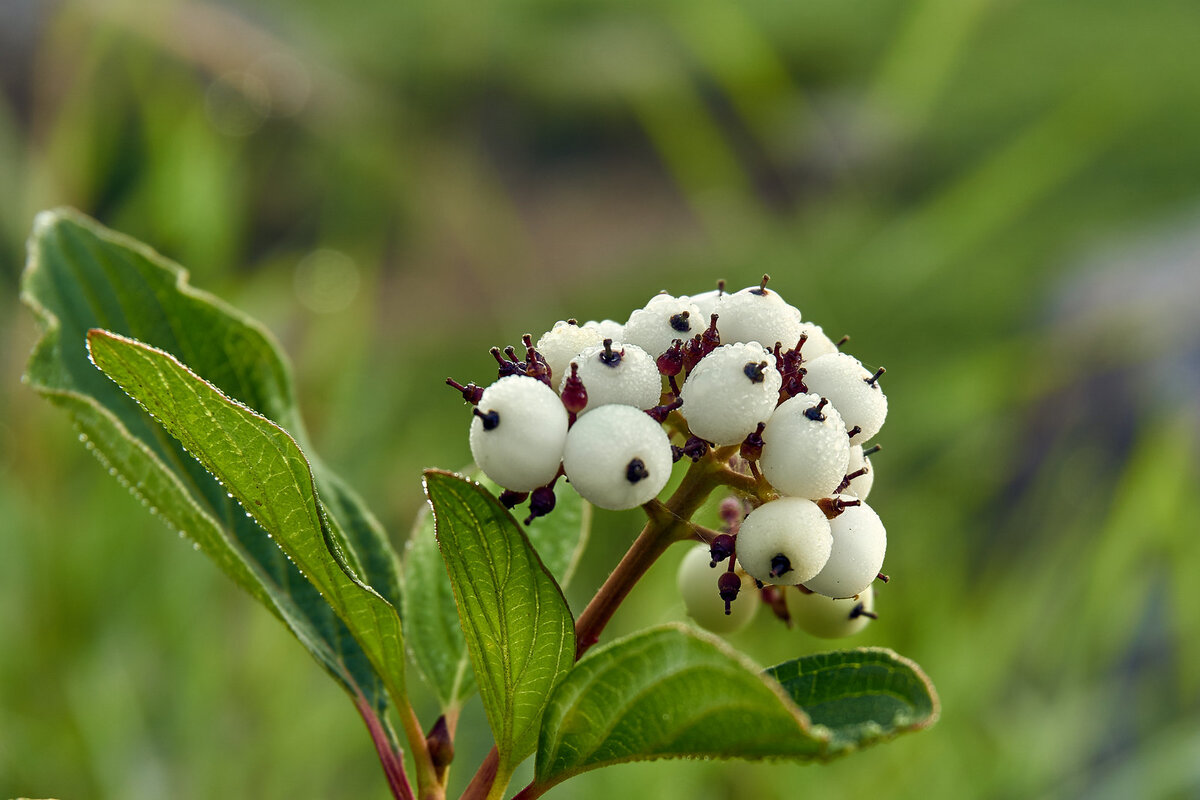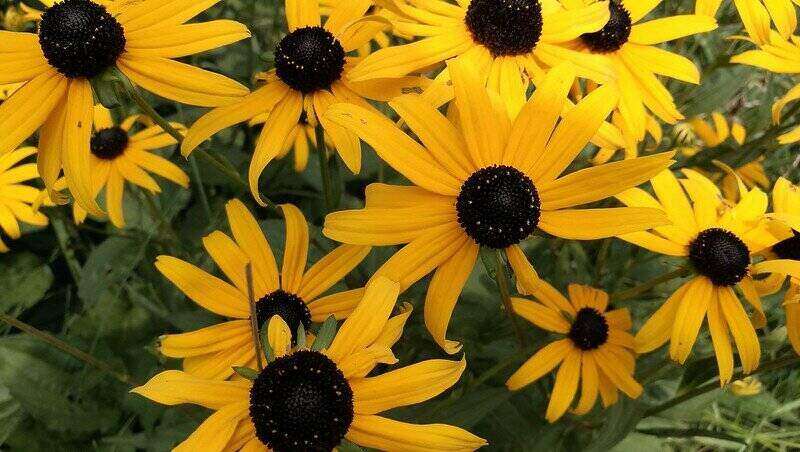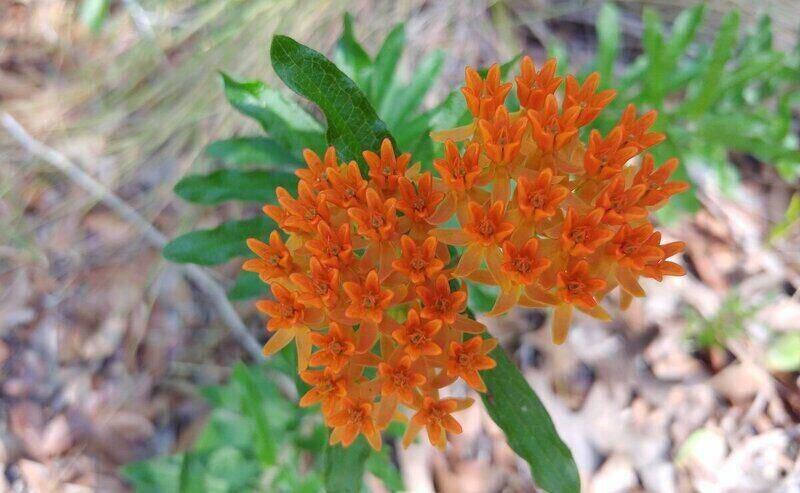
Grand Rapids takes great pride in being among the nation’s greenest cities. One way you can play a significant role in your environmental community is by growing native plants. Nonnative plants are beautiful, but native plants result in a healthier ecosystem.
Native plants save you time, money, and energy, and they make your landscape greener. Here’s how:
- Native plants have adapted to Grand Rapids’ soil conditions and climate, which means native plants can flourish without much fertilizer. Less fertilizer means more money in your pocket and less toxic runoff polluting our waterways.
- Plants native to Grand Rapids are resistant to many of the city’s local pests and diseases, which means you’re less likely to use (and buy) chemical pesticides that pollute the environment.
- Native plants have adapted to the city’s precipitation levels, which means you’ll conserve precious water and spend less time with the hose in your hand.
- They provide a food source and natural habitat for local animals.
- Many native plant species have deep root systems that help control erosion.
Don’t have many native species to pick from? These nine best native plants for Grand Rapids are a great place to start.
1. Black-eyed Susan (rudbeckia hirta)

If you’re a beginner green thumb looking for a flower that’s easy to grow and can handle neglect, then you’ll love the black-eyed Susan. This daisy-like flower brings a wave of sunshine to the yard with its bright yellow petals and domed, brown, centered discs. The flower sits atop a stiff stem with hairy, dark green leaves.
Black-eyed Susans can make a great addition to your cottage garden or along your landscape’s borders. The native plant is drought-tolerant, heat-tolerant, and grows well in many soil conditions (except for wet, poorly drained soils).
Despite being a short-lived perennial, the native wildflower remains in the garden through self-seeding, as long as you don’t deadhead it. Your black-eyed Susans will likely out-bloom many of your garden’s flowers, blooming from early summer through fall.
- Plant type: Flower
- Hardiness zones: 3-9 (varies by species)
- Sun: Full sun
- Water needs: Medium
- Soil: Clay, sand, loam, acidic, moist, well-drained
- Duration: Biennial or short-lived perennial
- Mature height: 1-3 feet
2. Butterfly weed (asclepias tuberosa)

Grand Rapid locals can make a significant environmental impact by growing butterfly weed. The stunning flower is a valuable food source and host plant for the monarch butterfly larvae. The monarch butterfly is best known for its phenomenal 3,000-mile migration to Mexico, yet its population has drastically declined due to habitat loss.
The deer-resistant and drought-tolerant plant features bright yellow-orange flower clusters and dense, dark green foliage. You can easily propagate butterfly weed from seed. However, the slow grower takes 2 to 3 years to mature and bloom. If you don’t want the flower to self-seed and spread in the garden, remove the 3- to 6-inch long seed pods before they burst open.
Butterfly weed performs well in poor, dry soils and occurs naturally in rocky open woods, prairies, roadsides, and fields. It doesn’t produce a milky sap as other milkweeds do, but it does have delicious nectar for hungry bees, hummingbirds, and butterflies.
- Plant type: Flower
- Hardiness zones: 3-9
- Sun: Full sun
- Water needs: Low
- Soil: Sandy
- Duration: Perennial
- Mature height: 1-2 feet
3. Nannyberry (viburnum lentago)
Attract wildlife to your Grand Rapids yard with the non-fragrant nannyberry. Every autumn, its white, delicate flower clusters are followed by bluish-black berries beloved by animals. The drooping berries are delicious to eat and even make yummy jams and jellies.
The deciduous shrub can be grown as a small tree, reaching heights up to 20 feet tall. Its glossy, green, toothed foliage turns a purplish-red in fall. The nannyberry fits seamlessly into a natural landscape design, but remove the shrub’s suckers if you don’t want it to spread.
The native plant has no serious pest or disease problems, though it can develop mildew and leaf spot on occasion. Nannyberry occurs naturally in moist areas such as swamp borders and near stream banks.
- Plant type: Shrub or small tree
- Hardiness zones: 2-8
- Sun: Full sun, partial shade
- Water needs: Medium
- Soil: Clay, loam, sand, moist, well-drained soil
- Duration: Perennial
- Mature height: 10-20 feet
4. Red-osier dogwood (cornus sericea)

The red-osier dogwood showcases flat-topped clusters of tiny, creamy white, fragrant flowers in late spring. But it’s not the native shrub’s flowers that garner most of the plant’s praise and admiration. It’s the bright red stems and showy ornamental berries that make this plant a treat to have in the landscape.
Your snowy landscape might feel gray and dull, but with the red-osier dogwood surrounding its borders, your lawn will turn into a winter wonderland. Its bright red stems are a sight to behold against a white backdrop. Although pruning isn’t necessary, many gardeners will still prune the shrub to promote new growth, as new stems are often the brightest red.
The native plant bears white, drooping berries with a bluish glow that birds love to gulp down. For humans, white fruits are more a visual attraction than a desirable snack.
The multi-stemmed, suckering shrub is a fast grower that prefers organically rich, well-drained, moist soils. It often grows in swampy areas, along lakes and rivers, and wetland margins.
- Plant type: Shrub
- Hardiness zones: 2-7
- Sun: Full sun, partial shade
- Water needs: Medium to high
- Soil: Chalk, clay, loam, sand, moist, adaptable to a wide range of soils
- Duration: Perennial
- Mature height: 6-9 feet
5. Rose mallow (hibiscus moscheutos)
If you’re looking for a shrub that will steal the show, the rose mallow shrub should be at the top of your list. Giant heart-shaped leaves with toothed margins adorn this perennial. Midsummer to early fall, the mighty plant produces exquisite flowers measuring 8 to 12 inches across. The flowers showcase five large overlapping white or pink petals with a burgundy center.
Rose mallow flowers only last for one to two days, but new blooms quickly replace the spent flowers. During peak bloom, a large rose mallow shrub can bloom more than 20 flowers per day.
Not only is the rose mallow stunning, but it’s practical too. It’s a larval host plant for several butterfly species, making it the perfect addition to your butterfly garden.
The shrub tolerates partial shade but grows best in full sun. Remember to keep the soil consistently moist, as this native plant is not a fan of dry soils.
- Plant type: Shrub
- Hardiness zones: 5-9
- Sun: Prefers full sun, can tolerate light shade
- Water needs: Medium to high
- Soil: clay, loam, moist
- Duration: Perennial
- Mature height: 3-7 feet
6. Swamp milkweed (asclepias incarnata)

Like the butterfly weed, the swamp milkweed is critical to the monarch butterfly’s survival. The native plant boasts pink, clump-forming flowers atop stiff, upright stems. The stems feature lance-shaped, bright green opposite leaves that reach up to 6 inches in length.
The eye-catching plant can reach up to 5 feet tall and stands out in the butterfly or cottage garden. Keep in mind that all milkweed species are toxic to humans and animals, so this is not a plant you’ll want to throw into your experimental flower salad.
- Plant type: Flower
- Hardiness zones: 3-6
- Sun: Full sun
- Water needs: High
- Soil: Clay
- Duration: Perennial
- Mature height: 3-5 feet
7. White oak (quercus alba)
Grand Rapids will never have enough trees, and neither will the planet. While the white oak might be a slow grower, the glorious giant will be enjoyed for generations to come. It reaches heights up to 100 feet and lives 200 to 300 years on average.
Mind where you plant the tree. Its long taproot makes it difficult to transplant. And because the white oak lives for so long, where you grow it is a long-term commitment.
The magnificent rounded canopy ranges between brown and dark red in autumn. The native tree produces acorns when it reaches about 50 years old, so it’s going to take some time before traveling animals can snack on its falling fruit. You might not be living in your current home long enough to see your tree reach extraordinary heights, but the future residents will be thankful for the gift.
- Plant type: Tree
- Hardiness zones: 3-9
- Sun: Full sun to partial shade
- Water needs: Low
- Soil: Clay, sand, loam, acidic, well-drained
- Duration: Deciduous perennial
- Mature height: 100 feet
8. Wild lupine (lupinus perennis)

Wild lupine is the breath-taking flower that your prairie garden has been missing. The 2-foot-tall plant boasts narrow, elongated clusters of bluish-purple flowers that attract butterflies, hummingbirds, and pollinators. The long clusters sit atop upright stems, so your friends and family will never miss them when passing through your garden.
The wildflower is a nitrogen-fixing plant. If some of your garden’s plants are struggling due to low nitrogen levels, planting a few wild lupines nearby can make a big difference. Wild lupine also has a long taproot, making it a perfect flower for erosion control.
- Plant type: Wildflower
- Hardiness zones: 3-8
- Sun: Full sun to partial shade
- Water needs: Low
- Soil: Sand, dry
- Duration: Perennial
- Mature height: 1-2 feet
9. Winterberry (ilex verticillata)
The winterberry shrub brings significant interest to the barren winter landscape. Its bright red berries provide a striking splash of color from winter through early spring, or at least until the birds have gobbled them all down. Remember that female and male winterberry shrubs must be growing near each for the berries to appear, and only the female shrub produces the berries.
The plant blooms tiny white flowers with green centers in spring. The flowers are plain and not very showy, which is why the deciduous shrub is mainly prized for its winter charm.
For a grand spectacle, grow the winterberry in the masses. The native plant has good tolerance for poorly drained wet soils and will perform well in your bog or rain garden.
- Plant type: Shrub
- Hardiness zones: 3-9
- Sun: Full sun, partial shade
- Water needs: Medium to high
- Soil: Clay, loam, sand, moist, acidic
- Duration: Perennial
- Mature height: 3-15 feet
Native plants are the greener choice
Native landscaping is an excellent way to support Grand Rapids’ sustainability mission and show the planet you care. Plants native to Grand Rapids are accustomed to our climate and soil conditions, which means they require little maintenance and chemicals to thrive. That means more money in your pocket and fewer pollutants harming your favorite city.
While nonnative plants might make an attractive addition to your yard, they often require chemical assistance to grow. In some cases, a nonnative plant is an invasive species and can harm the surrounding environment.
Want more Michigan native plants to choose from? Michigan State University (MSU) offers an extensive list of plants native to Michigan’s southern lower peninsula. You also can do your shopping at a local native plant nursery in the Grand Rapids area.
Need help installing your new native plants? A Grand Rapids local lawn care pro can handle all your lawn care needs, including prepping the flower beds, mowing your Grand Rapids turf, and even managing your spring lawn care checklist. While a lawn care pro takes the burden off your shoulders, relish in the free time and grab your favorite snack at Yesterdog!
Main Photo Credit: Derek | Flickr | CC BY-SA 2.0



